
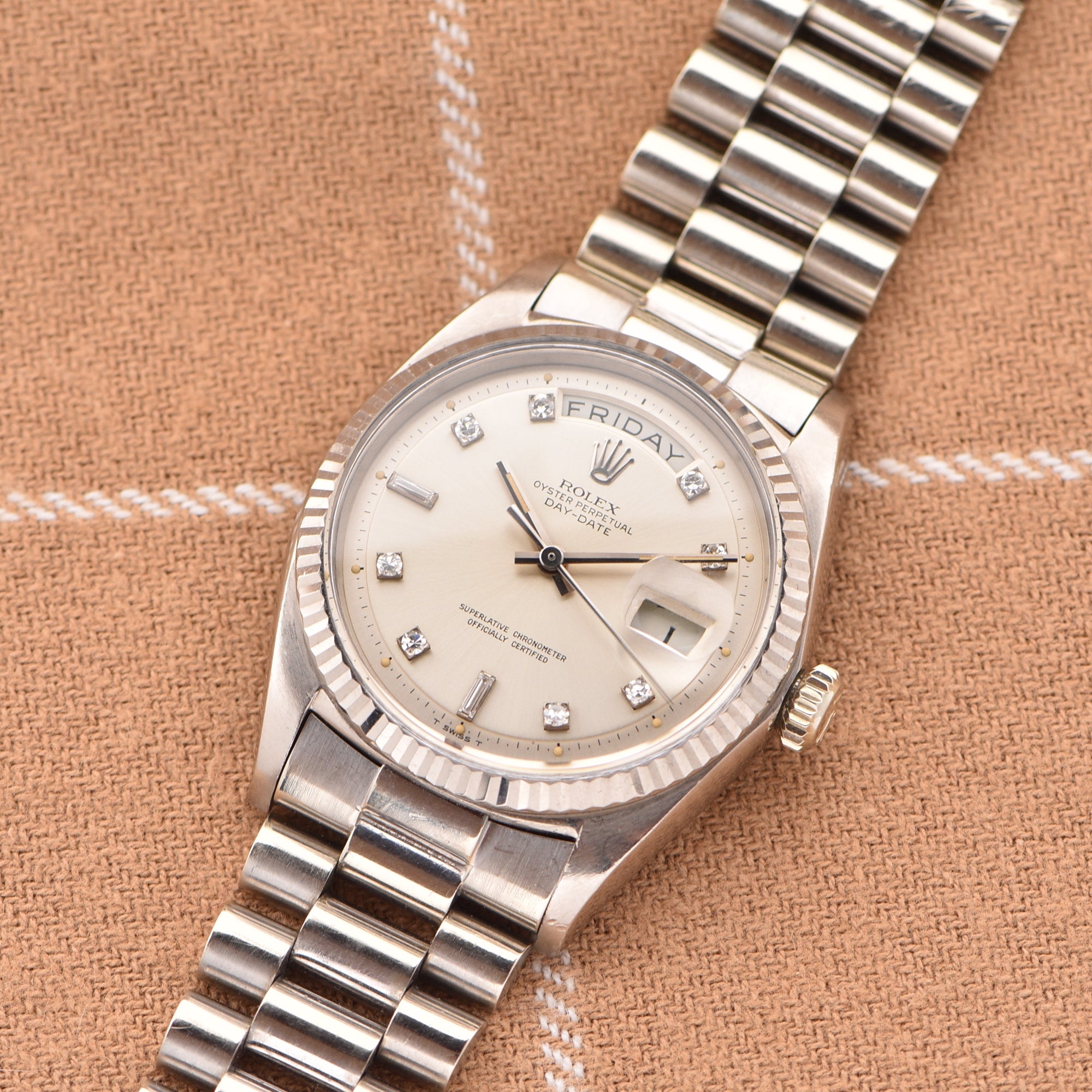
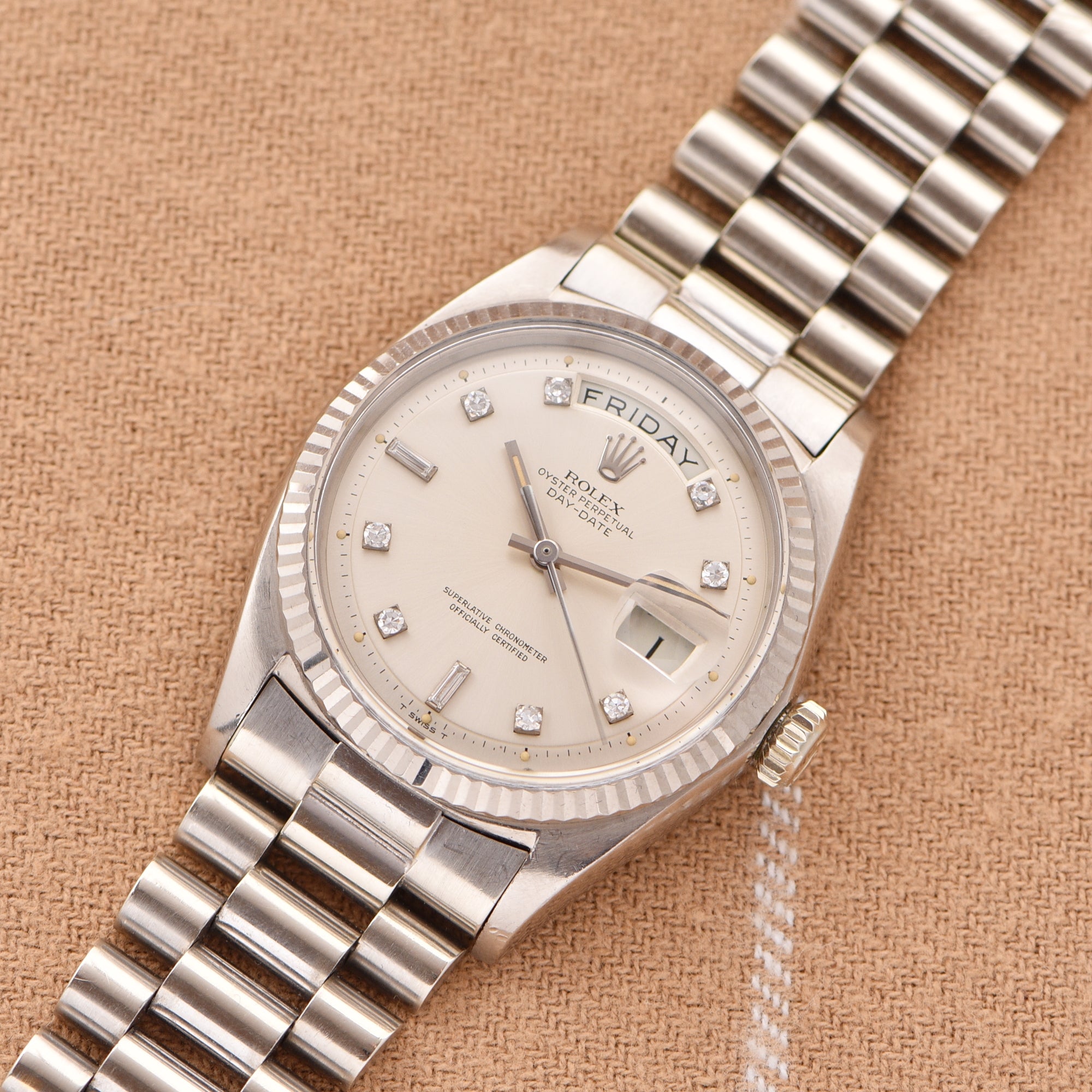
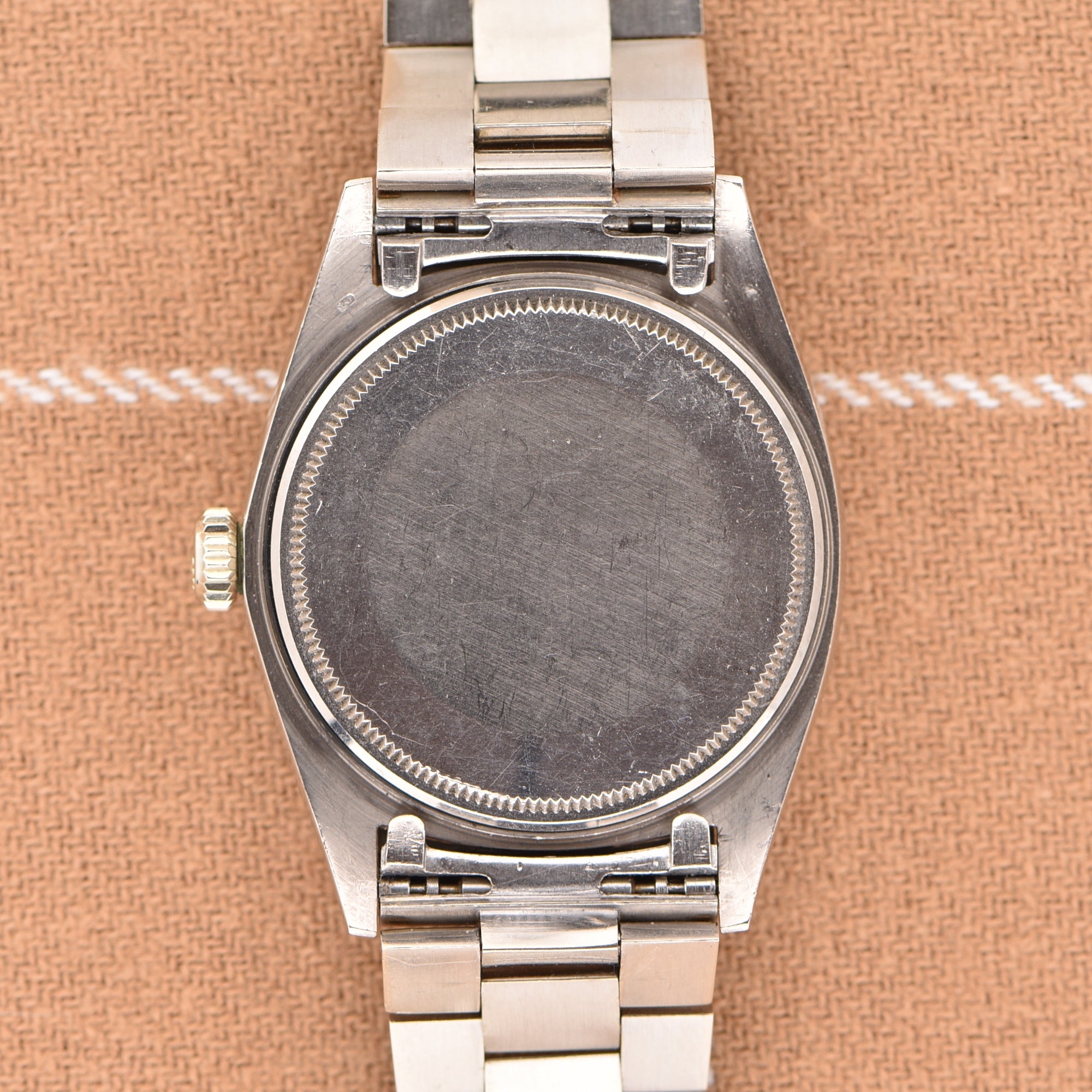

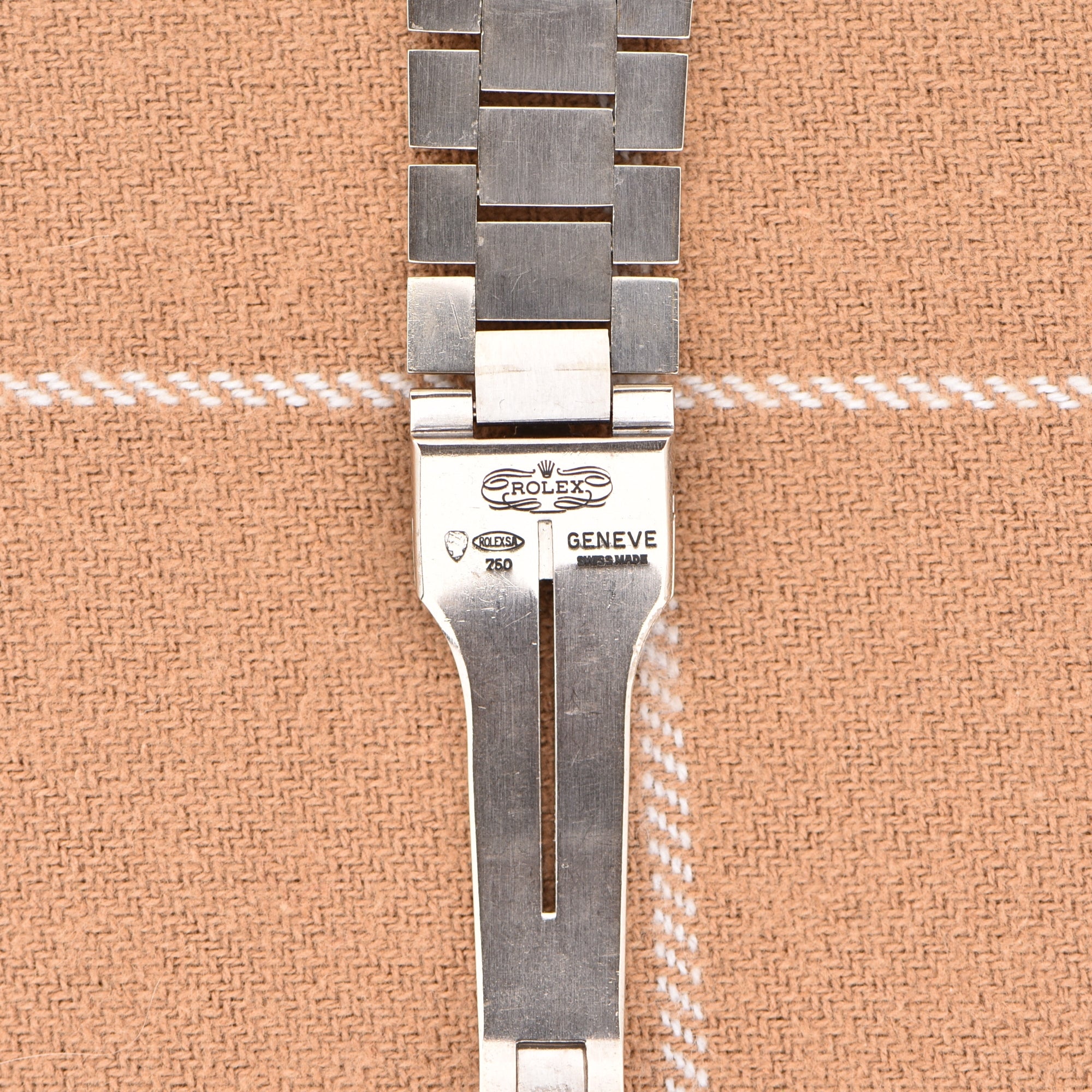

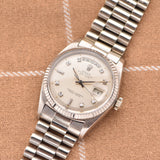
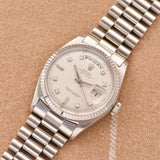
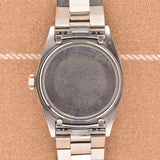
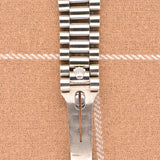
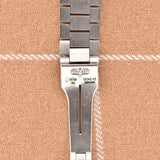
1969 Rolex Day-Date Factory Diamond Dial
- Reference 1803
- Watch only
- Wire Price: $17,000
- Specifications
- The Story
- The Brand
Year: 1969
Model: DayDate
Case Diameter: 36mm
Lug to Lug: 40mm
Case: White Gold
Condition: No significant wear as seen
Dial: Silver
Movement: Automatic
Condition
The dial is nice and clean, and it has factory diamond hour markers. The dial and hands also still have all the original tritium lume intact. The case is very clean for an early DayDate. The lugs are still thick and even.
The Day-Date, a popular watch with over 6 decades of history, began with ref. 6510 and 6511 in 1956. These legendary watches were the first to display the date and day of the week, and came with the "president" bracelet. The 18xx series followed in the 1960s, featuring the new 1555 caliber and improved movement. The 18xx also introduced several bezel and bracelet textures, including the "bark" finish and brushed texture. Dial configurations were almost infinite, with over 80 models and over 20 languages.
In 1977, the Day-Date was updated with a new 3055 caliber and sapphire glass, introducing a quick-set date. The Oysterquartz was introduced in the late 1980s to late 1990s, with a unique design resembling the Rolex 5100. The Day-Date 182XX was introduced in 1988, featuring a double quickset function. In 2000, the 6-digit Day-Date President watches with references 118XXX were introduced, with modifications mainly on the bracelet and clasp.
In 2008, the Day-Date II was released with a 41mm case, which was later replaced by the Day-Date 40 in 2015. Despite changes in the Rolex catalog and steel models, the Day-Date continues to make greats in popular culture and will forever be an icon.
The reference, being 18239, means that this Day-Date has a double quickset caliber 3155. It also means the watch features a sapphire crystal. When looking at the reference, the last digit tells you what the case material is. The 9 means the watch is white gold. This example also comes with its original papers and box set. The booklets are dated to 1999.
Wilsdorf & Davis was initially a watch importer, but by 1908, Wilsdorf had registered 'Rolex' as a trademark. The name was chosen after trial and error, with some believing it was taken from the phrase 'horological Excellence' or because the word sounds like a watch being wound. Wilsdorf was aware of the power of branding and began a long campaign to get the new company name on the watches he exported. The relationship between Rolex and Aegler started the same year that Wilsdorf & Davis set up the business, placing the largest order for wristwatches ever seen. Wilsdorf was attracted by Aegler's commitment to the highest quality, as their movements were extremely accurate and small. In 1910, one of Rolex's models won a First Class Chronometer Certificate from the rating office in Bienne, Switzerland, and in 1914, another piece became the first ever wristwatch to be granted a Class A Chronometer Certificate from the Kew Observatory in England, the only non-marine timepiece to ever achieve it. The firm of Wilsdorf & Davis became synonymous with a commitment to uncompromising excellence.
WWI in 1914 led to the rebranding of Wilsdorf & Davis as Rolex in 1915. The British government imposed a 33.3% tax on luxury goods, forcing Rolex to relocate to Bienne. Despite the war, the wristwatch proved its utility, as it was used by soldiers during combat and in the field. Rolex produced trench watches, using Aegler's small movements for wearability. By the end of the war, wristwatches became a utilitarian accessory for men. In the years between the wars, Rolex asserted its independence, partnering with Carl F. Bucherer to resist the Federation of Swiss Watch Manufacturers. In 1926, Rolex introduced the Oyster case, making wristwatches waterproof, dustproof, and robust. Wilsdorf capitalized on this innovation by installing Rolex Ambassadors, or 'Testimonies', with celebrities as a marketing masterstroke.
During WWII, Switzerland retained its neutrality, meaning that it was one of the few countries not forced to shut down watch manufacturing to supply the war effort. As a result, by the end of hostilities, the Swiss watch industry was way ahead of other nations. Rolex truly came of age in the 1950s by launching some of the most enduring legends in watchmaking, such as the Explorer, Submariner, GMT-Master, Day-Date, and Milgauss.
The quartz crisis of the 1970s and 80s forced the company to change tactics but ultimately repositioned itself as the purveyor of the ultimate luxury lifestyle. Today, the name Rolex is synonymous with refinement, opulence, and personal accomplishment. The Rolex brand as we know it today is the byproduct of an unrelenting drive for excellence and over a hundred years of refinement and development, all in pursuit of the brand’s singular goal of making the world’s best wristwatch.
1969 Rolex Day-Date Factory Diamond Dial
Authenticity Guaranteed
All our watches are carefully inspected to insure the authenticity of the watch
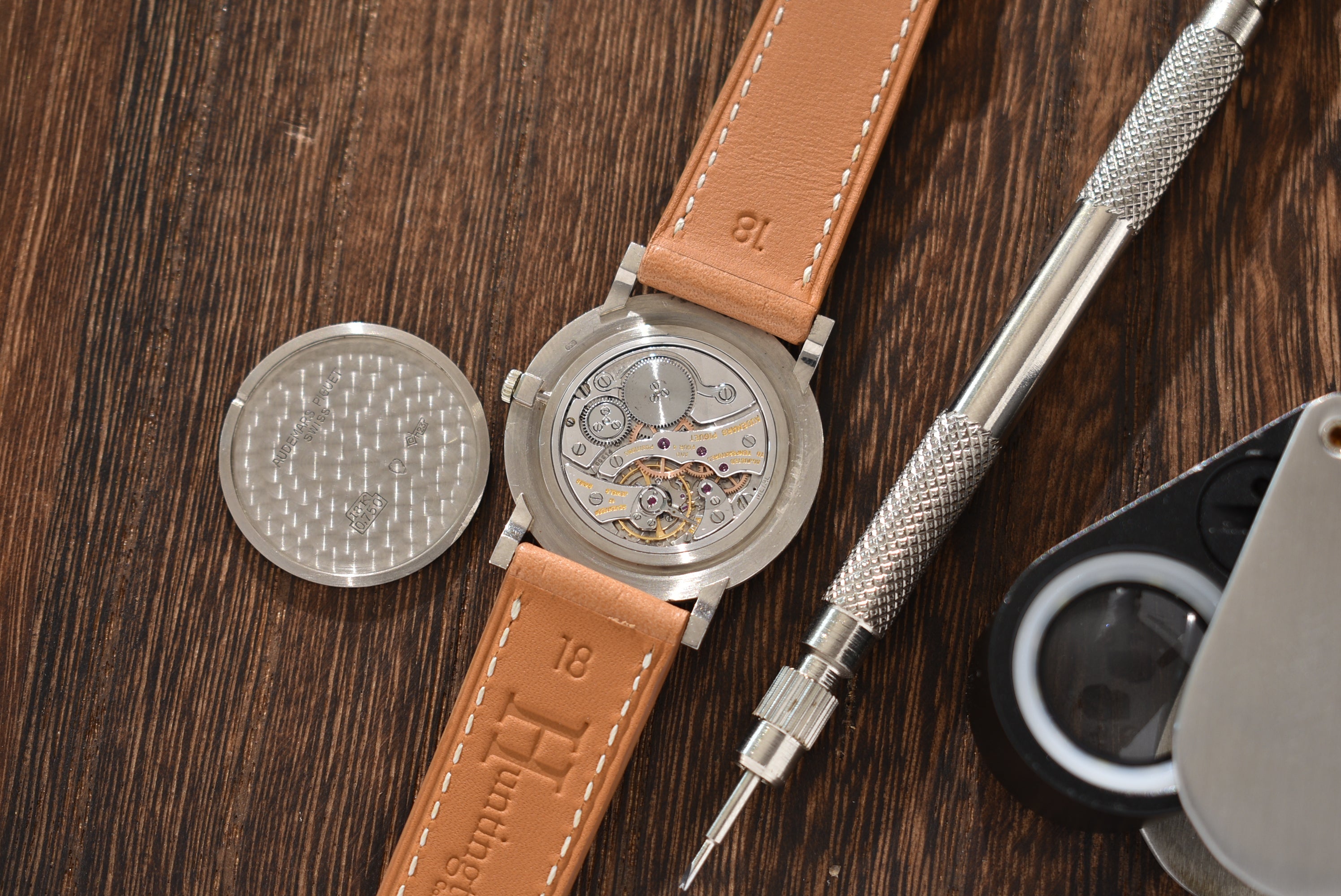
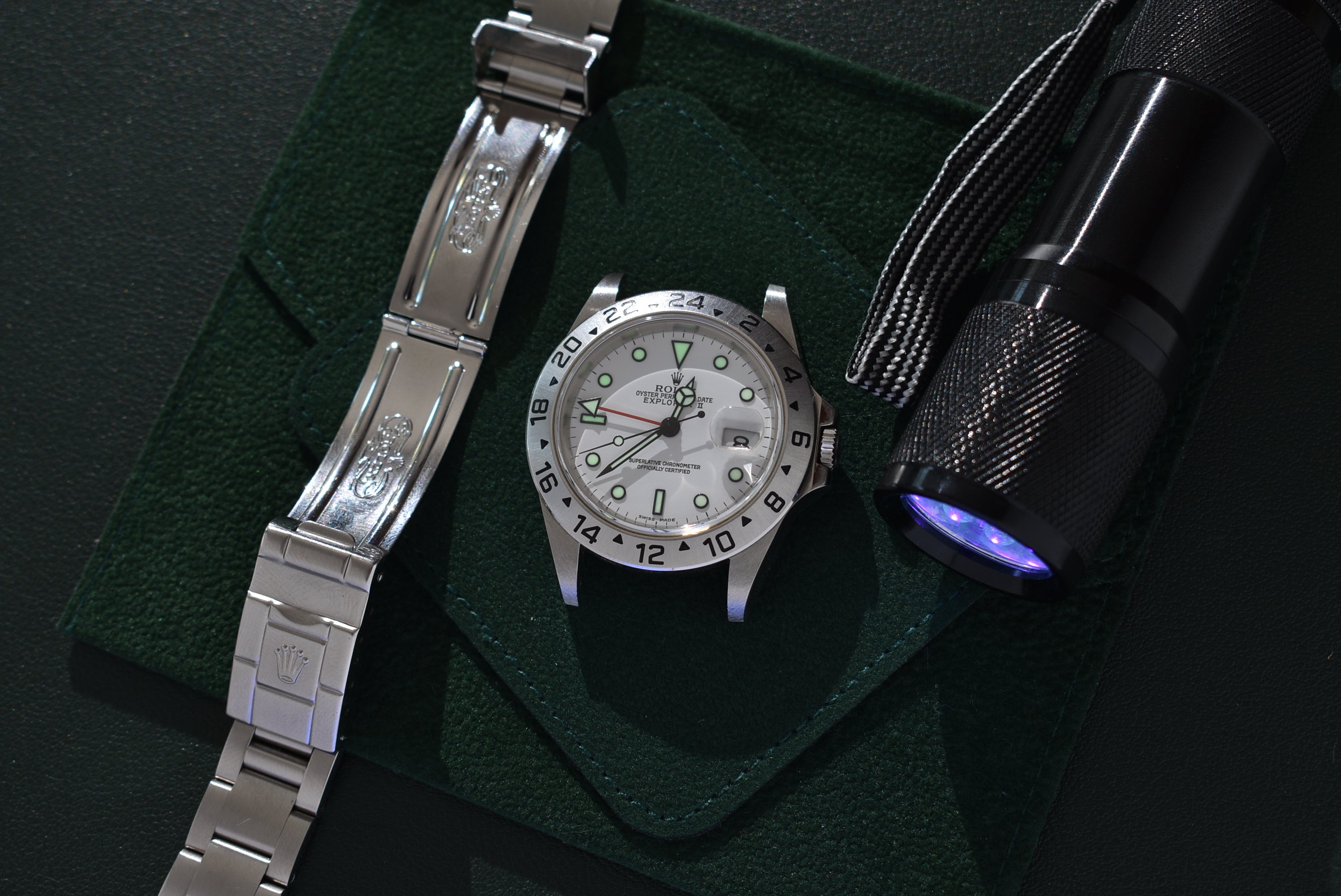
The Details
All our watches are scrutinized during inspection to make sure our descriptions are as accurate as possible.
- Related products
- Recently viewed
